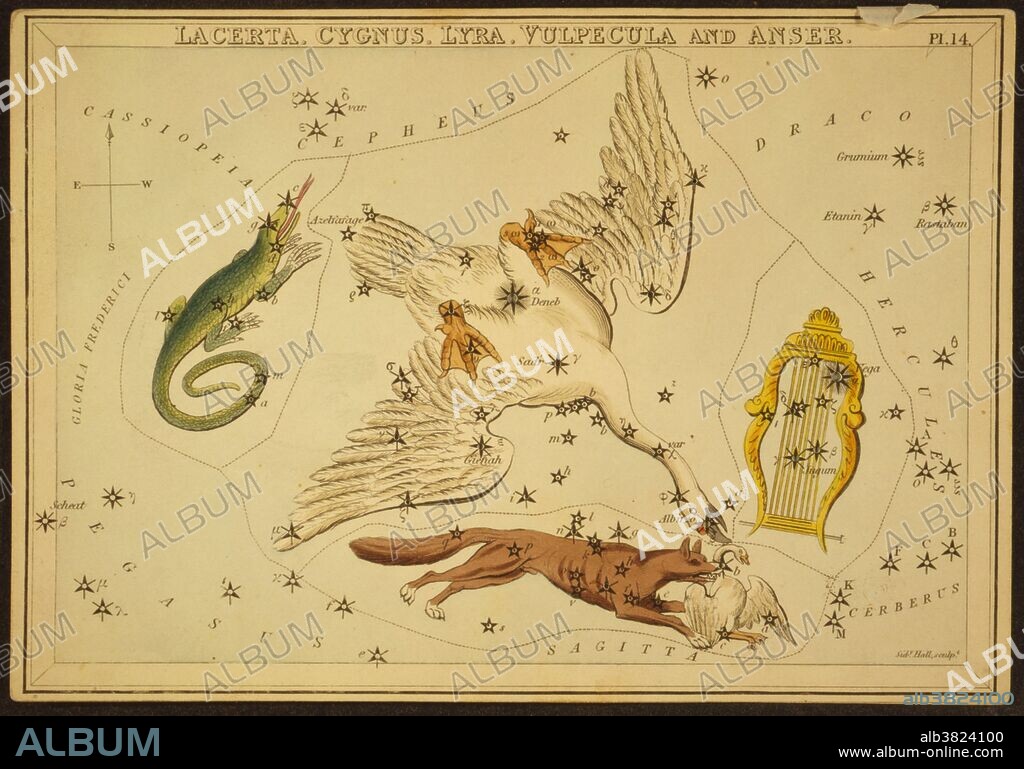alb3824100
Lyra, Cygnus, Lacerta and Vulpecula, 1825

|
Ajouter à une autre Lightbox |
|
Ajouter à une autre Lightbox |



Avez-vous déjà un compte? S'identifier
Vous n'avez pas de compte ? S'inscrire
Acheter cette image.
Sélectionnez l'usage:

Titre:
Lyra, Cygnus, Lacerta and Vulpecula, 1825
Légende:
Voir la traduction automatique
Astronomical chart showing a swan, a lyre, a lizard, and a fox killing a goose forming the constellations. Lyra is a small constellation. Its principal star, Vega, a corner of the Summer Triangle, is one of the brightest stars in the sky. Cygnus constellation, its name is the Latinized Hellenic (Greek) word for swan. One of the most recognizable constellations of the northern summer and autumn, it features a prominent asterism known as the Northern Cross. Lacerta is a small, faint constellation, created in 1687 by the astronomer Johannes Hevelius. Its brightest stars form a W shape similar to that of Cassiopeia, and it is thus sometimes referred to as Little Cassiopeia. Vulpecula is a faint constellation. Its name is Latin for little fox, although it is commonly known simply as the fox. It was identified in the 17th century, and is located in the middle of the Summer Triangle. Alpha Vulpeculae is the brightest star in the constellation Vulpecula. It has a traditional name, variously represented as Lukida, Lucida Anseris, or Anser, a tradition kept from when the constellation had the name Vulpecula et Anser 'the fox and the goose.
Crédit:
Album / LOC/Science Source
Autorisations:
Modèle: Non - Propriété: Non
Questions sur les droits?
Questions sur les droits?
Taille de l'image:
3859 x 2700 px | 29.8 MB
Taille d'impression:
32.7 x 22.9 cm | 12.9 x 9.0 in (300 dpi)
Mots clés:
 Pinterest
Pinterest Twitter
Twitter Facebook
Facebook Copier le lien
Copier le lien Email
Email
